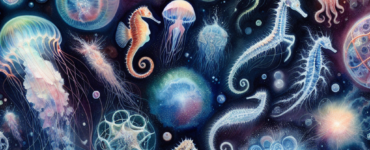Have you ever heard of a phenomenon so mysterious that even the brightest minds call it “spooky”?1 Welcome to the world of quantum entanglement, where particles across vast distances seem to communicate instantaneously. But how can this be, and what does it mean for our understanding of the universe?2
Quantum entanglement is a term coined in the realm of quantum physics, describing a peculiar connection between particles. Once two particles become entangled, the state of one (no matter how far away it is) will instantly correlate with the state of the other. This phenomenon was first discussed by Albert Einstein, Boris Podolsky, and Nathan Rosen in 1935, and Einstein famously referred to it as “spooky action at a distance.”3 Despite his skepticism, numerous experiments have since confirmed entanglement’s reality, compelling scientists to reassess their understanding of the principles governing the universe.
A significant breakthrough in the field came in 1964 when physicist John Bell proposed a way to test the reality of quantum entanglement—now known as Bell’s Theorem. Bell’s theorem provided a method to experimentally verify the existence of entanglement and challenged the classical notions of locality and causality. Since then, numerous experiments have supported Bell’s findings, solidifying entanglement as a foundational element of quantum mechanics.4
But how does quantum entanglement work? In simple terms, when two particles become entangled, their properties become linked, so that the state of one directly influences the state of the other, regardless of the distance separating them. This means that measuring a particular property of one particle (like spin or polarization) instantly determines the corresponding property of its partner, a discovery which has perplexed scientists for decades.
This “spooky” phenomenon has real-world applications, particularly in the field of quantum computing and encryption. Research teams across the globe are working on harnessing entanglement to develop quantum computers, which promise to vastly outperform current computing capabilities. Likewise, quantum encryption based on entanglement could lead to unbreakable communication systems, reshaping the future of cybersecurity.5
It’s incredible to think how a concept once debated and even dismissed by some of the greatest minds is now at the forefront of scientific innovation. Quantum entanglement challenges our classical understanding of the universe and opens up possibilities once thought to be mere science fiction6.
As we continue to unravel the mysteries of quantum entanglement, we are reminded of the words of physicist Richard Feynman: “I think nature’s imagination is so much greater than man’s, she’s never going to let us relax.” This journey into the quantum world is just beginning, and who knows what astonishing discoveries await us?
- https://scienceexchange.caltech.edu/topics/quantum-science-explained/entanglement [↩]
- khttps://spectrum.ieee.org/what-is-quantum-entanglement [↩]
- https://plato.stanford.edu/entries/qt-entangle/ [↩]
- https://www.scientificamerican.com/article/spooky-quantum-action-passes-test/ [↩]
- https://www.nature.com/articles/s41586-020-2401-y [↩]
- https://iopscience.iop.org/article/10.1088/1742-6596/1827/1/012120/pdf [↩]




































Add comment